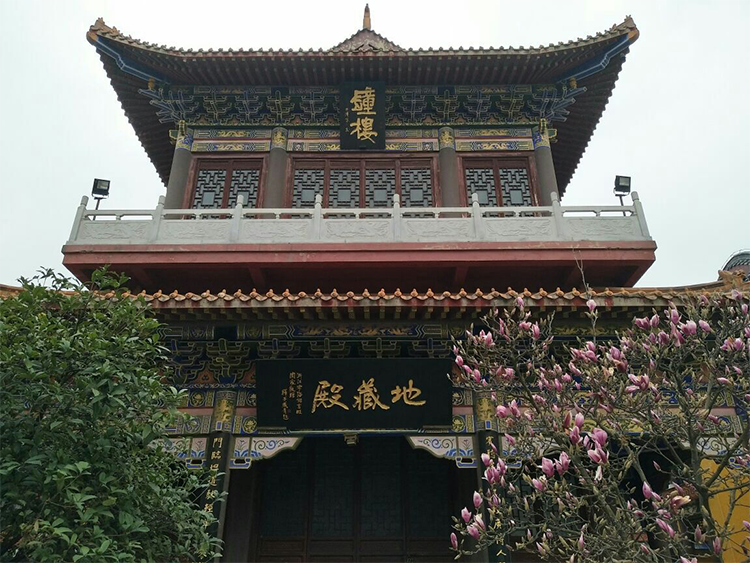Guizhou Travel Guide: Xiputuo Temple in Guiyang – Modern Zen Amid Mountain Splendor
In the green mountains of southwest China sits a temple that marries a thousand-year Buddhist spirit with contemporary craftsmanship—Guiyang’s Xiputuo Temple. Nicknamed the “Guizhou Forbidden City,” its red walls and golden roofs blend with terraced slopes to offer visitors both a visual feast and a calm, reflective experience.
1. Core Features: The Classical Soul of a Modern Monastery
Built in 2005, Xiputuo Temple takes Ming and Qing architectural styles as its model while integrating the terrain and materials of Guizhou. The reinforced concrete structure reproduces flying eaves and bracket sets in a traditional aesthetic but with modern durability. Spread across about 15,000 square meters, the complex features a Han-white-jade Nine-Dragon Wall, a gilded glazed-tile roof, and views of jade-green ridges—every step invites the Eastern philosophy of harmony between heaven and earth.
2. History and Status: A New Temple with a Cultural Mission
Although young compared with ancient monasteries, Xiputuo carries a mission to revive and promote traditional culture. Built through local government and Buddhist-organizations collaboration, it was designed to function as both a religious center and a cultural landmark for Guiyang. Regular ceremonies, meditation classes, and public lectures have quickly made it an important hub for Han Chinese Buddhism in Guizhou.
3. Architecture and Art Highlights
• The meaning in the hall layout
Entering through the mountain gate and following the central axis, visitors pass the Hall of Heavenly Kings, the Mahavira Hall, and the Sutra Library—an arrangement symbolizing ascending stages of practice. The Mahavira Hall houses an approximately 8-meter-tall Shakyamuni statue with a compassionate expression; eighteen arhats flank the central figure, showing how contemporary sculpture has faithfully revived classical Buddhist forms.
• The Nine-Dragon Wall
The white-jade Nine-Dragon Wall in front of the main hall is a centerpiece of temple art. Nine dragons are carved in lifelike relief; in Chinese symbolism, the dragon is a guardian, and nine is the most yang number—together they imply protection by the Dharma. In sunlight the white jade emits a warm glow that contrasts dramatically with the temple’s crimson walls.
• The Guanyin Pavilion’s quiet
Perched at the highest point, the Guanyin Pavilion offers the best panoramic vantage. Inside stands a Thousand-Armed Guanyin; outside windows frame a sweeping view of Guiyang. The pavilion is often hushed, broken only by wind chimes—ideal for seated contemplation.

4. Immersive Visit Tips
• Join a morning bell-and-drum ceremony
The temple rings drums and tolls bells daily at 6:00 AM and again at 5:00 PM. Visitors may observe monks chanting and feel the Zen sentiment of “hearing the bell, worries ease.” On lunar-first and fifteenth days or on Buddha’s birthday, larger blessing ceremonies take place.
• Try a beginner Zen retreat
A one-day meditation course is offered monthly (advance reservation recommended), including seated meditation, walking meditation, and tea-ceremony practice. Even beginners can learn breathing and calming techniques under a teacher’s guidance.
• Incense etiquette
The incense burner stands before the Mahavira Hall; you may bring your own or buy eco-friendly incense at the temple. Hold two sticks between both hands, lift to the brow, silently make your wish, then place them in the burner. Extinguishing by blowing is discouraged—gently shake to subdue the flame out of respect.
5. Atmosphere and Environment
Unlike the weathered feel of ancient monasteries, Xiputuo emanates a fresh solemnity. Weekdays are generally quiet—local elders often chant beads while art students sketch in the corridors. After rain, mists weave around the red walls and create an almost otherworldly scene.
6. Suggested Itineraries
• Recommended visit length: 2–3 hours (half-day if joining a retreat)
• Best time: 8:00–10:00 AM for soft light and fewer tour groups
• Combined routes:
– Cultural half-day: Xiputuo Temple → Guizhou Provincial Museum (15 minutes by car) to learn about ethnic minority cultures
– Nature day: Xiputuo Temple → Qianling Park (25 minutes by car) to see wild macaques and Hongfu Temple
7. Practical Information
• Basics
– Address: Yunfeng Avenue, Baiyun District, Guiyang (search “Xiputuo Temple”)
– Opening hours: 8:00–17:30 (open year-round)
– Admission: Free
• Getting there
– Metro: Line 2, Baiyun North Road Station, Exit B, then about 1.2 km walk
– Bus: Routes 70 or 230 to the “Yunfeng Avenue” stop
– Car: Free parking is available on the east side of the temple
• Notes
– Dress code: Avoid shorts and sleeveless tops (free shawls available at the entrance)
– Photography: No flash inside halls; drones require prior permission
– Facilities: A vegetarian dining hall near the Sutra Library offers local Guizhou vegetarian dishes (about ¥20 per person)
8. Local Insider Tips
• Hidden photo spot: A small platform behind the Guanyin Pavilion frames both the golden roof and distant peaks—excellent for photography.
• Special seasonal experience: After winter snow, the temple becomes a “glazed world”—a must for photographers.
• Avoid scams: Vendors outside may push overpriced incense or charms; use the temple’s free incense or purchase from official booths.

Conclusion
Xiputuo Temple may lack the age-worn stones of ancient monasteries, but through skilled modern craftsmanship it revives the architecture and spirit of Buddhist tradition. Here you can touch cultural warmth and experience a living religious site adapted to the contemporary era. If you’re in Guiyang, set aside a half day to let this mountain “Forbidden City” unfold a measured, contemplative tableau of Dharma and landscape.


